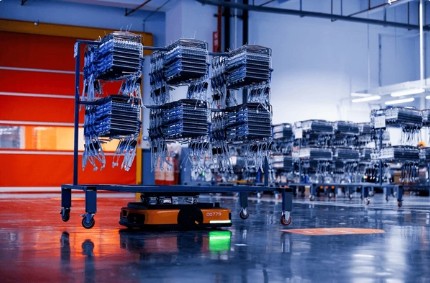Autonomous Transport Systems (AGV/AMR) for Loading and Unloading Metalworking Machines
Autonomous Transport Systems (AGV/AMR) for Loading and Unloading Metalworking Machines
Modern metalworking production is becoming increasingly automated. While in the past the main focus was on machine tool robotics and CNC systems, today in-plant logistics is moving to the forefront. One of the most effective solutions are autonomous transport systems — AGV (Automated Guided Vehicles) and AMR (Autonomous Mobile Robots).
What are AGV and AMR?
-
AGV – transport robots moving along predefined routes (magnetic lines, QR markers, or sensor-based guides).
-
AMR – more intelligent robots capable of building their own routes, avoiding obstacles, and adapting to a changing production environment.
Both technologies are designed to move workpieces, tools, and finished products within the workshop without human involvement.
Tasks in metalworking
-
Loading and unloading machines (supplying blanks, removing finished parts).
-
Transportation between workshops (from storage to working zones).
-
Integration with automated warehouses and robotic manipulators.
-
Reducing manual labor in heavy and hazardous operations.
Advantages
-
Increased productivity — less machine downtime.
-
Cost reduction — fewer operators needed for logistics.
-
Flexibility — AMRs can be reprogrammed easily.
-
Safety — sensors prevent collisions and accidents.
-
Transparency — integration with MES/ERP ensures full tracking.
Technologies and integration
-
Lidar and 3D camera navigation for AMR.
-
Wi-Fi and 5G connectivity for synchronization with factory systems.
-
Cooperation with robotic arms for palletizing and unloading.
-
Digital twin integration for optimized routing.
Real-world examples
-
China: AGVs deliver workpieces to CNC machines, reducing downtime by 20%.
-
Europe: AMRs connect warehouses with production lines, eliminating forklifts in some workshops.
-
Japan: AGVs integrated with presses perform a fully automated cycle of supply and removal.
Leading manufacturers
-
KUKA (Germany) – KMP mobile platforms.
-
MiR (Denmark) – modular AMRs for flexible logistics.
-
Omron (Japan) – LD/HD robots with swarm navigation.
-
Daifuku (Japan) – AGVs for heavy workpieces and warehouses.
-
Jungheinrich (Germany) – AGV forklifts and stackers.
-
Geek+ (China) – AMR leader in warehouse and manufacturing automation.
-
ASTI (Spain, ABB Group) – pallet and towing AGVs.
Practical applications
-
MiR – delivering blanks to CNC machines in Europe.
-
KUKA KMP – used for large components in Germany.
-
Omron AMR – logistics optimization in Japan.
-
Geek+ – solutions for Asian steel plants.
Economic effect
According to McKinsey, AGV/AMR implementation can reduce logistics costs by 20–30%, with payback within 2–3 years.
Conclusion
AGVs and AMRs are no longer luxury innovations but essential tools of the smart factory. The choice of system depends on payload, integration level, and scale of production. They are shaping the future of safe, efficient, and automated metalworking logistics.

